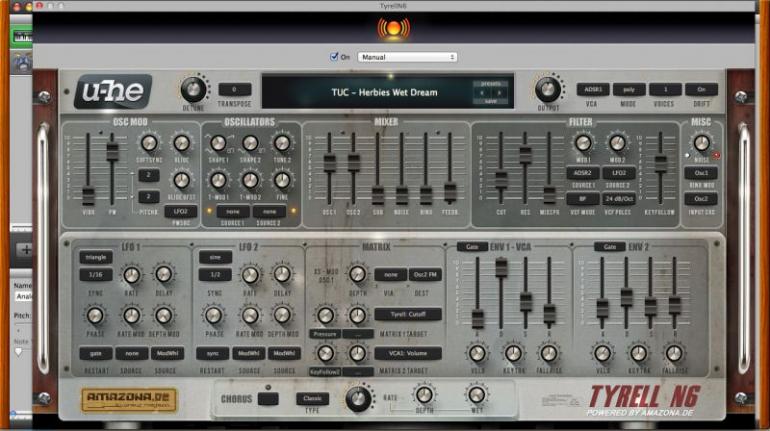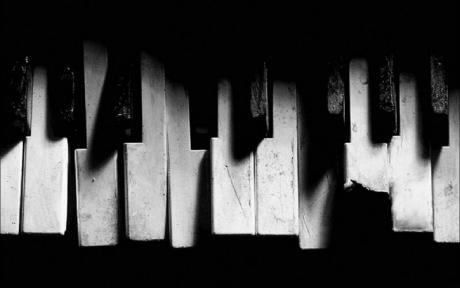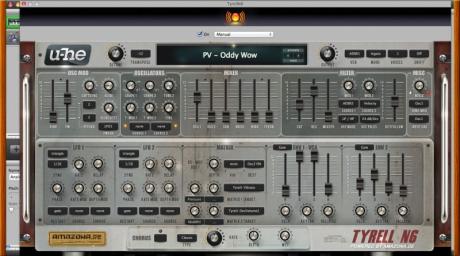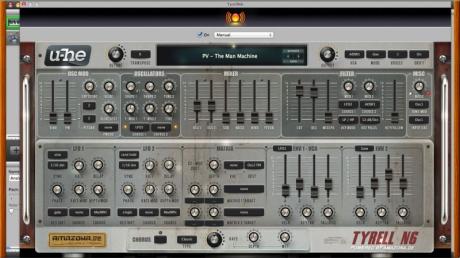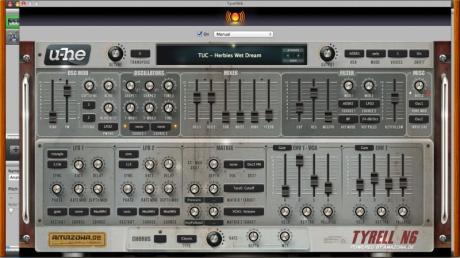Rock Organ XII. - Playing Keyboard Bass in a Rock Band

Čtenáři, možná vás zaskočí, že na českých stránkách nacházíte anglický text. Není to chyba. V současné době pro časopis Muzikus píše newyorkský klávesista a pianista Brian Charette. A tak jsem si v redakci řekli, že bychom mohli něco udělat pro zlepšení vašich znalostí angličtiny. Určitě nám dáte za pravdu, že angličtina se na pódiích objevuje stále častěji a potřeba domluvit se na pódiu i v zákulisí se stane brzy samozřejmosti. Proto zde naleznete originální verzi přímo od Briana a na stránkách časopisu Muzikus v čísle 11/2013 článek přeložený Petrem Štikou. Navíc zde máte audio ukázky, které do časopisu jaksi přeložit neumíme. Enjoy reading!
šéfredaktor časopisu Muzikus Ing. Vladimír Švanda
Being primarily a Hammond organist, I'm often in a setting where I have to play bass lines. I've come to believe that this is an invaluable skill for any keyboardist. It gets your time feel together and can really help if the economics of a gig or recording session require a band of fewer members. There are many examples of great keyboard artists who chose to supply their own bass lines instead of using a bassist. In the 70's, keyboardists like Stevie Wonder and Herbie Hancock would use Moog ynthesizers to hold down the low end and give an interesting new color to their recordings. New York City native, Robert Moog was an electrical pioneer and the inventor of the first portable programmable analog synthesizers. The Mini Moog, which was released in 1971, was an especially popular model with very fat bass sounds that could be easily shaped with different waveforms, oscillators, filters and various other effects. In the early 70's, artists were enamored with the interesting sound the synth could provide for baselines. This month, I would like to take a look at a few techniques for analog synth bass playing.
Ex 1.
For our examples I'll be using a virtual analog synth made by a great software developer called u-he that is freeware. In fact, there are many great freeware synths that sound great. Just do an Internet search for freeware synth plugins. Make sure to check out u-he's web site; http://www.u-he.com/cms/. They have lots of great virtual synths. In Ex. 1, we have aspitty 1/8 note bass line over a very straight ahead rock beat. Take a look at Env 2 which is controlling the filter. Notice how the slower attack setting causes the filter to slowly develop. This gives the sound a mushy, moving character. The cutoff frequency is set pretty low which gives a wha wha effect to the filter. The resonance being set fairly high accentuates the sparkle of the slowly developing filter. This can also be done manually by turning the cutoff frequency and resonance controls to taste. When coming up with your own bass lines, try to listen to the bass drum and organize the accents of your riff around the beats the bass drum falls on. You don't need a lot of complicated harmony either; put the chord root on the downbeat and use lots of roots and 5ths.
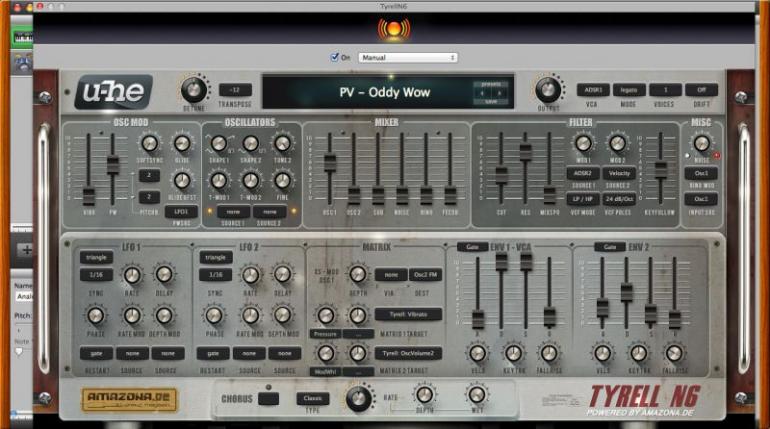

Ex 2.
This groove is slightly slower. Our synth bass sound here is also shorter than in Ex. 1. Notice how low the decay and sustain are set on both envelopes. This makes the sound stop very quickly and almost has the flavor of a Fender P-bass with a sponge in the bridge. The cutoff and resonance are set pretty high on this sound, but because the sound stops so quickly, the filter doesn't have a chance to fully develop. Notice our note choices again are simple roots, 5ths, and a few 7ths. There is not a need for other needless notes. If you keep your baseline simple, you will be able to easily play on top of it with your right hand on another sound. Try playing these lines at all tempos too. On your own, put a metronome on and come up with bass riffs in different tempos including very slow and very fast.


Ex. 3
Ex. 3 has an 80's English synth pop feel. The bass sound we've chosen has a 5th that sounds with the root. This is accomplished by tuning one of the oscillators up a 5th. This can be seen on the control marked "tune 2". Many analog synths have great bass presets and often a few that have 5ths or other intervals. The waveform chosen here is Triangle. There are three main waveforms on analog synths; Saw, Square, and Triangle. These each have very interesting sonic characteristics. Saw waves are often very buzzy. Square waves have a hollow sound. Triangle waves are kind of in the middle of these two. You can also combine the waves if you have two oscillators like our synth does. By selecting different waveforms and shaping them with the filters, cutoff and resonance, you can get great variance of sound very quickly, even in the middle of a line. Again we plug away on 1/8 notes to go with the bass drum.
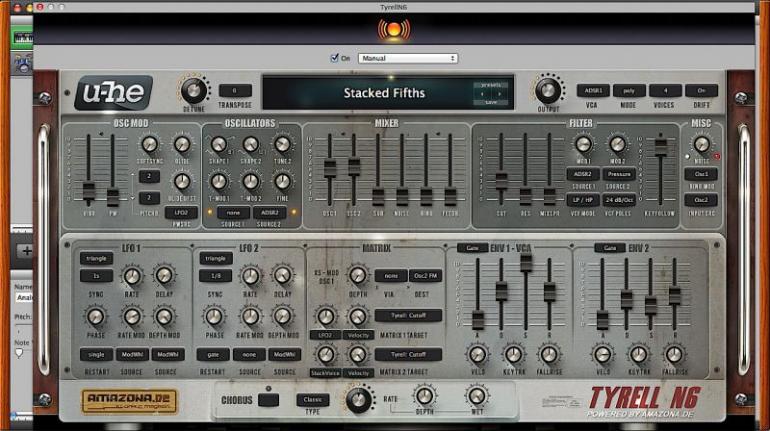

Ex 4.
This is a triplet based groove reminiscent of the chorus of Sly Stone's "Hot Fun in the Summertime". The name of the patch says it all. Again the cutoff is set pretty low with a high resonance and a slowly developing attack on the filter. The chord progression is a simple 2 minor to 5 Dominant that walks up the D Dorian mode (D, E, F, G, A, B, C, D) with a chromatic F# that resolves to the G on beat 4and. The measure of rest lets the groove work out on the drums. The phrase is repeated with the slight variation of the A instead of the F# on beat 4 of measure 3. On your own start experimenting with the pitch bend and mod wheels too. These can be assigned to various effects. putting some LFO on the mod wheel is great to get some fast vibrato for expressive fills. Try setting the pitch bend to a whole step and try pushing the wheel all the way up and down on the 1st beat to get a cool triplet turns as you play.
